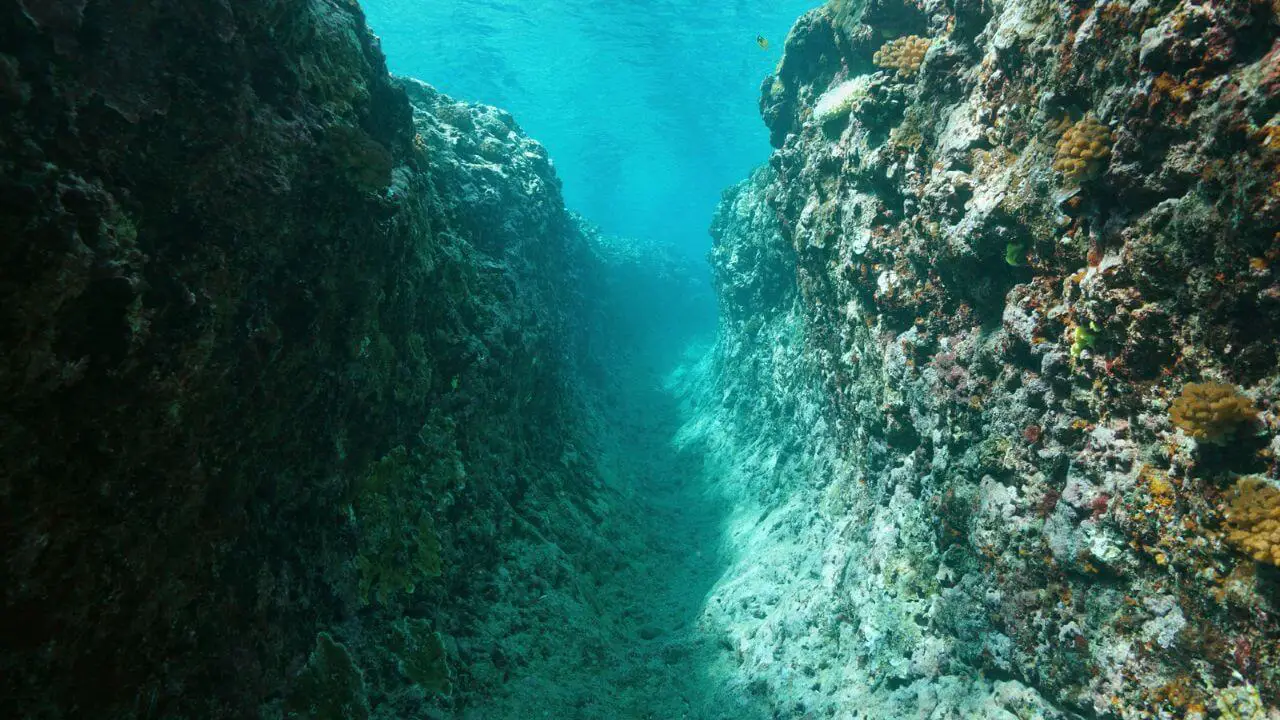Mariana Trench is approximately 11,034 meters or 36,201 feet deep. The measurements of the huge crescent (Trench) present in the depths of the Pacific Ocean are taken as;
- Length 2.550 km or 1,580 miles.
- Width 69 km or 43 miles.
For the illustration of the depth of Mariana Trench, it isn’t a bad example that “if Mount Everest was ever dropped into it (Mariana Trench), the peak of the mountain will still not be visible, instead it’ll still be approximately 1.6 kilometers deep (mountain tip)”.
How do scientists know that Mariana Trench is the deepest?
The British Ship H.M.S Challenger was the first ever ship diving into the Pacific ocean to check out the depth of the Trench in 1875. The measured depth of the Mariana Trench (by challenger I) was about five miles, on the other hand, the measured depth by challenger II was about 7 miles.
The procedure of checking depth was taken out using a weighted sounding rope, however, another challenger (British Vessel H.M.S Challenger II) returned to the spot in 1951 but this time with an echo-sounder to plumb.
Who has the official power over Mariana Trench?
Mariana Trench was officially called a US monument (January 6, 2009) which means, the official power over the trench has also been handed over to the United States. It is located in the Western Pacific Ocean (east of the Philippines) on/near Mariana Island (200 kilometers away from the island).
How was the Mariana Trench formed?
Surprisingly, the collision of two tectonic plates contributed to Trench formation. The procedure is known as “subduction” in which the Pacific Plate and the Mariana Plate happened to drag one plate underneath another and the dense oceanic crust slipped into the mantle, causing a Trench.
What is the temperature of the Mariana Trench?
At the bottom levels, the temperature of Mariana Trench drops rapidly up to 4C, roundabout 34 to 39 degrees F. It is +1000 times greater than the standard atmospheric pressure. Even sunlight doesn’t reach the bottom of the trench.
Can humans survive at the bottom of the Mariana Trench?
A human being can not survive through the Trench due to its water pressure which plays a huge role in suffocating human lungs and crushing bones. The trench is well known as one of the deadliest places on Earth.
🔬 Subscribe to SciMail
Get the latest science discoveries straight to your inbox!
The water pressure at the bottom levels is approximately 15,750 psi (1,086 bars). The immense water pressure also increases the water density upto 4.96 percent.
Who visited the Mariana Trench?
Only two men in history visited the bottom of the Trench named “Jacques Piccard ” and “Lieutenant John Walsh” almost 50 years ago in a submersible called “Trieste”.
Piccard claimed to see a flatfish. John also confirmed it but there is no proof of it because the time was so short that they couldn’t take pictures of the creature. However, four years later the marine biologists rejected this claim by saying vertebrate animals can’t survive under such harsh conditions.
What lives in Mariana Trench?
More than 200 microorganisms and other small creatures had been found living there without any light. The living species found underneath Mariana Trench include; octopuses, fishes, sea cucumbers, crustaceans as well as bacteria. Mariana Snailfish is one of the deepest ever found fish at a depth of about 8000 meters.
Marine Biologists say that these living organisms are thought to be living under such harsh pressure by making up some remarkable adaptations because It is believed that the bones of any vertebrate animal will dissolve due to the immense water pressure of the Trench particularly lacking calcium.
For instance; fish may have air-filled swimming bladders. They might have bodies made up of more cartilage than skulls with spaces or such bones to prevent liquidization.


Leave a Reply